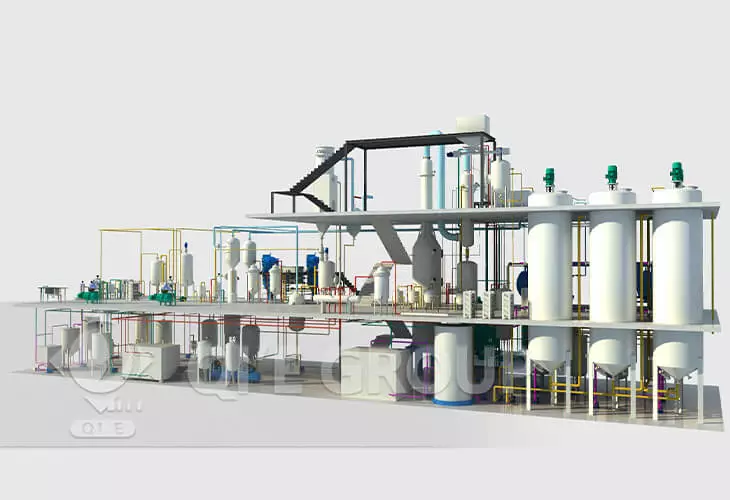
In the global market, the demand for high - quality soybean oil is increasing. For small - to large - scale grain and oil processing plants aiming to export, choosing the right soybean oil refining equipment is crucial. This article will guide you through the process of selecting efficient and energy - saving soybean oil refining equipment that meets the requirements of the export market.
When selecting soybean oil refining equipment, it is essential to analyze the production requirements of the export market. Different markets may have different quality standards and production scales. For example, some markets may require high - purity soybean oil, while others may focus on large - scale production. Therefore, the equipment's performance, such as processing capacity, refining precision, and energy consumption, should be carefully evaluated to ensure it matches the production needs.

304 stainless steel is a popular choice for soybean oil refining equipment. It has excellent corrosion resistance, which can prevent the equipment from being corroded by the oil and other substances during the refining process. This not only extends the service life of the equipment but also ensures the safety of the soybean oil. According to industry research, equipment made of 304 stainless steel can reduce the risk of contamination by up to 80%, effectively guaranteeing food safety.
The integrated design of degumming, neutralization, bleaching, and deodorization processes can significantly improve the efficiency of soybean oil refining. By integrating these four processes, the equipment can complete multiple refining steps in one continuous operation, reducing the transfer time between processes. This design can also reduce energy consumption by up to 30% compared to traditional equipment, as it eliminates redundant energy - consuming steps.

The modular structure design of soybean oil refining equipment offers many advantages. It simplifies the installation and commissioning process. Each module can be pre - assembled in the factory, and then quickly installed on - site. This reduces the installation time from weeks to just a few days. Moreover, the modular design makes maintenance easier, as faulty modules can be easily replaced, reducing the complexity of maintenance and shortening the production shutdown time.
Let's take a medium - sized grain and oil processing plant as an example. After installing a soybean oil refining equipment with the features mentioned above, the plant reduced its energy consumption by 25% in the first year of operation. However, during the installation process, they made a common mistake of not properly aligning the modules, which led to some minor vibration problems. By following the correct installation guide, they were able to solve the problem quickly and achieve stable production.

CE and ISO9001 certifications are important for soybean oil refining equipment in the export market. These certifications not only demonstrate the quality and safety of the equipment but also help the products meet the regulatory requirements of different countries. For example, CE certification is recognized in the European market, which can open up a large market for the equipment.
In conclusion, when choosing soybean oil refining equipment for the export market, factors such as equipment material, process integration, modular design, and international certifications should be carefully considered. By making a scientific choice, enterprises can achieve stable production, green and low - carbon transformation, and enhance their market competitiveness and brand reputation.
Ready to make the right choice for your soybean oil refining equipment? Get the "Soybean Oil Refining Equipment Selection Self - Check List" and book a free technical consultation now!

